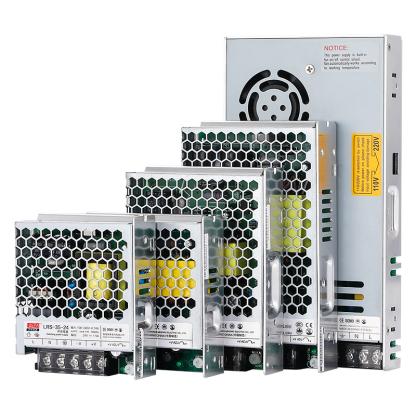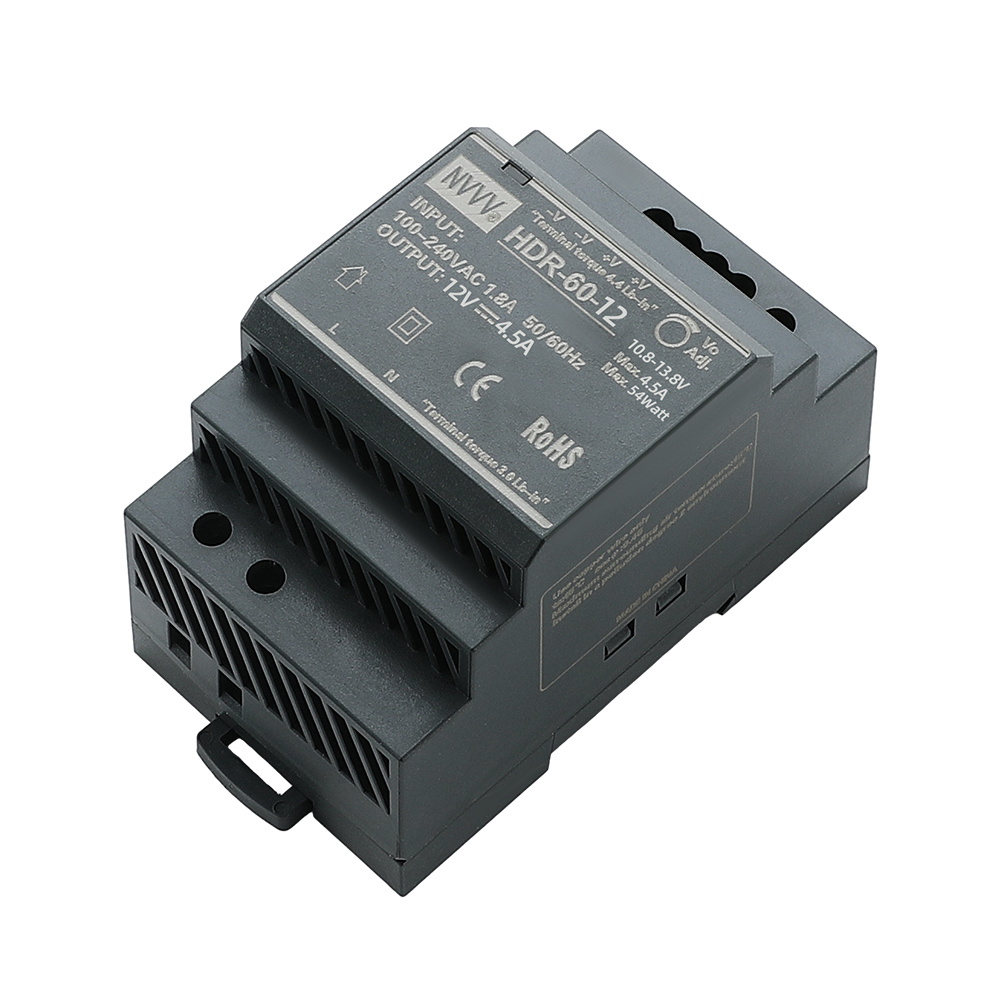What Is the Difference Between AC and DC Power Supplies?
Understanding AC vs. DC Power Supplies: Key Differences Explained
Quick Navigation
Why Are There Two Different Power Types?
AC vs. DC Power Supply – Key Differences
How Does an AC-DC Power Supply Work?
How Does a DC-DC Power Supply Work?
How to Identify an AC or DC Power Supply
Choosing the Right Power Supply
Power supplies play a crucial role in converting electrical energy into a usable form for different devices. While many power supplies convert AC to DC power, DC-DC converters are also widely used. Understanding the differences between AC and DC power supplies, their applications, and how they work will help you make informed decisions when choosing the right one for your needs.
What Is AC Power?
Alternating current (AC) power is the standard form of electricity supplied by power grids worldwide. The term "alternating" comes from the way the current flows—constantly changing direction in a wave-like pattern. This alternating movement of electrons creates a sinusoidal waveform, which allows power to be transmitted efficiently over long distances.
AC power is generated at power plants using alternators, which convert mechanical energy into electrical energy. Inside an alternator, a rotating wire loop within a magnetic field induces an electric current, producing the alternating voltage needed for electricity transmission. This process allows power to be transported across cities and regions with minimal loss, making it the preferred method for large-scale electricity distribution.
Most household and industrial outlets supply AC power because of its ease of transformation and transmission. It can be used directly in many appliances, such as lighting, refrigerators, and air conditioning systems. However, some electronic devices require DC power, necessitating the use of AC-DC converters.
What Is DC Power?
Direct current (DC) power flows consistently in one direction, unlike AC power. This steady flow of electrons makes DC power ideal for electronic devices that require a stable voltage, such as computers, smartphones, and LED lighting.
DC power is typically generated by sources such as batteries, solar panels, and rectifiers. Because DC power does not experience the same fluctuations as AC, it provides a reliable energy source for sensitive electronics. Many electronic devices include built-in AC-DC converters to transform AC power from outlets into DC power for internal use.
One of the biggest advantages of DC power is its efficiency in low-voltage applications. Devices such as electric vehicles, portable electronics, and telecommunications equipment rely on DC power for uninterrupted operation. However, transmitting DC power over long distances remains a challenge, which is why AC power is still dominant in power distribution systems.
Why Are There Two Different Power Types?
The history of AC and DC power traces back to the late 19th century during the "War of the Currents," a famous rivalry between Thomas Edison and Nikola Tesla. Edison advocated for DC power as the standard for electrical distribution, while Tesla, backed by George Westinghouse, promoted AC power as a more efficient alternative.
DC power was initially used in early electrical grids, but its inability to be easily converted to higher or lower voltages made long-distance transmission impractical. In contrast, AC power could be transformed and distributed more efficiently, leading to its widespread adoption.
Despite the dominance of AC power in large-scale electricity transmission, DC power remains crucial for modern electronics. Many industrial and commercial applications still require DC power, necessitating the use of AC-DC and DC-DC power conversion technologies.
AC vs. DC Power Supply – Key Differences
Understanding the key differences between AC and DC power supplies will help you choose the right power source for your needs:
-
Direction of Current Flow: AC power alternates in direction, while DC power flows in one direction.
-
Transmission Efficiency: AC power is more efficient for long-distance transmission, whereas DC power is best for short-distance applications.
-
Voltage Conversion: AC voltage can be easily stepped up or down using transformers, while DC voltage requires more complex conversion methods.
-
Applications: AC power is commonly used in household and industrial settings, while DC power is preferred for electronics, battery storage, and renewable energy systems.
How Does an AC-DC Power Supply Work?
An AC-DC power supply is essential for converting alternating current into direct current. This process involves several components working together:
-
Transformer: Adjusts the input voltage to the required level.
-
Rectifier: Converts AC to DC by allowing current to flow in only one direction.
-
Filter: Smooths out fluctuations in voltage.
-
Voltage Regulator: Ensures a stable DC output suitable for electronic devices.
AC-DC power supplies come in different forms, including linear and switching power supplies. Switching power supplies are more efficient and compact, making them suitable for a wide range of applications. NVVV specializes in high-quality AC-DC power supplies designed for industrial and commercial use.
How Does a DC-DC Power Supply Work?
A DC-DC power supply is used to modify the voltage level of direct current without altering its type. These power supplies are vital in applications where the input voltage needs to be adjusted to meet the specific requirements of a device.
DC-DC converters operate by:
-
Using an Inverter: Converting DC into AC to facilitate voltage transformation.
-
Applying a Transformer: Adjusting the voltage level accordingly.
-
Rectifying Back to DC: Converting AC back to DC for a stable output.
DC-DC power supplies ensure that devices receive the correct voltage levels without significant losses. These power supplies are widely used in electric vehicles, telecommunications, and renewable energy systems. NVVV provides reliable DC-DC power supplies that ensure efficiency and stability across various applications.
How to Identify an AC or DC Power Supply
Determining whether a power supply is AC or DC is essential for proper device compatibility. Here are some ways to identify the type of power supply you have:
- Check the Label: Most power supplies have input and output specifications printed on them. An AC-DC power supply will list an AC input and a DC output, while a DC-DC power supply will show DC input and output values.
- Identify the Power Source: Outlets typically supply AC power, whereas batteries and solar panels provide DC power.
- Use a Multimeter: Measuring the voltage output of a power supply can help determine if it is AC or DC.
- Consult the Manufacturer: If unsure, refer to the product documentation or contact the manufacturer for guidance.
Choosing the Right Power Supply
Selecting the right power supply depends on your device’s voltage and current requirements. Consider these factors:
- Device Compatibility: Ensure the power supply meets the voltage and current requirements of your equipment.
- Efficiency: Choose a power supply with high efficiency to reduce energy waste.
- Durability: For industrial applications, opt for rugged, high-quality power supplies like those offered by NVVV.
Ready to Choose the Right Power Supply for Your Needs?
Get High-Quality Power Supplies from NVVV!
NVVV specializes in industrial power supplies, ensuring durability, efficiency, and reliability in all products. Our AC-DC and DC-DC power supplies are designed to withstand extreme conditions and provide stable power for various applications.
Browse our selection today to find the perfect power supply for your needs!











